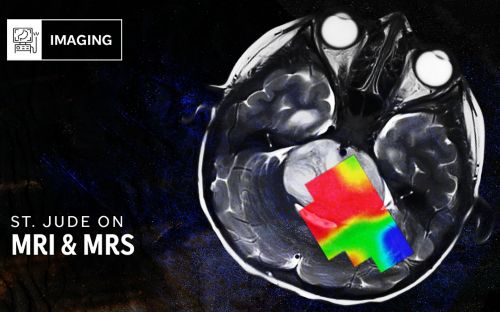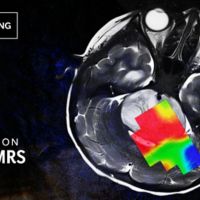Gene editing holds the promise of a sickle cell cure

Gene editing holds the promise of treating, and potentially curing, sickle cell disease.
In September 1982, a young Black girl, just eight years old, and her family turned to St. Jude Children’s Research Hospital for help. Six years before, at age two, she was diagnosed with sickle cell disease (SCD), a condition where red blood cells adopt a sickle or crescent shape rather than a healthy round shape. Sickle cell disease is one of the world’s most common deadly genetic disorders, affecting people of primarily African descent. The condition is caused by a few mutations that disrupt the structure of hemoglobin, the blood oxygen carrier. This little girl had at least one medical crisis requiring hospital intervention every year.
The patient was recently diagnosed with acute myeloid leukemia (AML), a type of blood cancer. This terrible combination — at the time, one of only three reported cases of SCD and AML co-occurrence— would launch an ongoing scientific odyssey in SCD research: finding an effective, durable and universal cure.
A St. Jude oncologist treated the patient for AML with bone marrow donated from her four-year-old brother, who was a donor match. Two years after the transplant, the patient’s AML was successfully cured. Unexpectedly, so was her SCD. The study, published in 1984 in the New England Journal of Medicine, was a watershed moment — showcasing to the world that bone marrow transplantation could cure SCD.
Clinicians still use bone marrow transplantation to cure SCD, and the methods are improving. However, few children have appropriate bone marrow donor matches, and serious side effects can occur, including graft versus host disease and graft rejection by the patient’s immune system. For decades, researchers have been searching for better ways to cure SCD. The discovery of genetic editing has facilitated these efforts.
A single mutation makes SCD a great genome-editing target
The fact that a single mutation usually causes SCD makes it an attractive target for genetic editing. Correcting or bypassing that mutation has the potential to cure the disease. Instead of supplying blood stem cells from a different individual using standard bone marrow transplantation, the goal is to alter a patient’s own blood stem cells to produce healthy hemoglobin. This process would avoid the immune complications that arise after receiving blood stem cells from another individual.
The genetic mutation that causes SCD was discovered 50 years ago. Typically, the oxygen-carrying molecule hemoglobin comprises four protein subunits in an adult’s red blood cells. Two are alpha-globin, and the other two are beta-globin. In patients with SCD, beta-globin is formed incorrectly. Beta-globin malformation is caused by an abnormality to one single nucleotide (the A, T, C and G sequence that makes up DNA) in the 3.2 billion base pair genome.
When an A mutates into a T in the beta-globin gene, the sixth amino acid in the 147-amino-acid-long beta-globin protein changes from a glutamic acid to a valine. This one change — a single incorrect amino acid — makes hemoglobin stiffer, causing red blood cells to become fragile, sticky and assume the trademark “sickle” shape. The misshapen cells clog capillaries and fail to deliver oxygen efficiently, resulting in severe episodes of pain, damage to multiple organs and early death.
The impact of SCD on the human body is drastic. As recently as the 1970s, the average life expectancy of Americans with SCD was 14 years. With modern medical therapies, including blood transfusions, antibiotics, vaccinations and hydroxyurea, more than 95% of patients survive into adulthood. However, most of these individuals suffer greatly and die prematurely by age 50. In low-income countries, such as many African nations, about half of children with SCD die before age five.
Gene editing promises to be a one-time treatment and cure for these individuals.
Gene editing: A different kind of cure
Genome editing uses a small segment of RNA, termed “guide RNA,” to find a specific DNA sequence within the human genome, using the CRISPR molecule as a platform. An attached enzyme (Cas9) then cuts the DNA at a precise location or alters specific nucleotides. Scientists can use these technologies to disrupt an undesired DNA sequence or, in more complex technologies, change or replace the targeted DNA sequence.
As gene editing can change DNA sequences within blood-forming cells, it has the potential to cure SCD, either by correcting the causal genetic mutation or by introducing mutations that induce the expression of a different hemoglobin gene that can bypass the damaging effects of the SCD mutation. During the decade since the discovery of CRISPR-Cas9, St. Jude has been at the forefront of developing these corrective genome editing technologies.
“When I came to St. Jude nine years ago, we had no research on how to cure sickle cell disease,” said Mitchell Weiss, MD, PhD, St. Jude Department of Hematology chair. “In the last nine years, we have started doing the most cutting-edge experimental therapies for curing sickle cell disease, including novel approaches to bone marrow transplantation and gene therapy using CRISPR-Cas9-based approaches.”
In addition, investigators at St. Jude continue to pursue basic and preclinical discoveries relevant to SCD. The St. Jude Sickle Cell Disease Collaborative Research Consortium facilitates this research, bringing together top scientists from across the US to focus on generating innovations that will promote safer and more effective cures.
“It will take some time, but our vision for the future is to provide safe and effective cures to every one of our sickle cell disease patients at an early age before they develop organ damage,” Weiss said. “Even further down the road, we hope to offer cures to patients living in parts of the world where the disease is much more common, including Sub-Saharan Africa, India and the Middle East.”
CRISPR-Cas9 gene editing for sickle cell disease
CRISPR-Cas technologies have revolutionized the treatment of many genetic diseases, including SCD. Cas9 is an endonuclease that cuts DNA. It can hold a short, customized RNA template (around 17-24 nucleotides) that recognizes a specific, unique DNA sequence within the genome of cells. The user designs this single guide RNA (sgRNA), so it can target a sequence that the user wants to change, such as the mutated section of the beta-globin gene or a regulatory region controlling a fetal hemoglobin gene that can be reactivated in adult red blood cells to reverse the effects of the SCD mutation.
For example, scientists at St. Jude are investigating how to treat or cure SCD by inducing fetal hemoglobin production. Adult hemoglobin has two beta-globin subunits, but in utero, the fetus has two gamma-globin subunits paired with two alpha-globin subunits. This combination is called fetal hemoglobin. Notably, it doesn’t use beta-globin. In most people, fetal hemoglobin production is deactivated at birth. However, not all people make this switch successfully, and people with SCD who don’t fully make the switch seem to be partially protected from the disease.
“More than 50 years ago, researchers had observed that people with beta-thalassemia or sickle cell disease mutations who also inherited a genetic variant that gave them persistently high levels of fetal hemoglobin didn’t get as sick,” Weiss said. “It has been a holy grail to figure out how to use drugs or genetic manipulation to enhance fetal hemoglobin therapeutically in these common, serious diseases.”
In 2016, using CRISPR-Cas9, Weiss’s group showed an early proof-of-principle that removing a section of DNA that controls the switch from fetal to adult hemoglobin expression could cause persistent fetal hemoglobin expression in SCD patient-derived red blood cells and prevent them from sickling. The study was published in Nature Medicine.
“Our approach to gene editing is informed by the known benefits of hereditary persistence of fetal hemoglobin,” Weiss said. “We have found a way to use CRISPR gene editing to produce similar benefits.”
While the work was promising, it revealed the complexity of beta- versus gamma-globin regulation. In a following study published in 2021, Weiss’s lab documented the regulatory regions of DNA controlling fetal hemoglobin production in Nature Genetics. They found two distinct activator sequences, each paired with a nearby repressor sequence. The St. Jude scientists designed ways to disrupt or enhance these elements. The scientists could greatly enhance fetal hemoglobin production by disrupting a gamma-globin gene repressor element or by enhancing the potency of an activator element. However, the proximity of activators and repressors has implications for any genetic therapies impacting the region.
“Now we understand that because these activator and repressor sites are so close to each other, we have to be especially careful during genome editing procedures not to destroy the activator while trying to interfere with the repressor,” Weiss said.
St. Jude researchers further characterized the regulatory regions of gamma- and beta-globin expression in another Nature Genetics study, led by Yong Cheng, PhD, St. Jude Departments of Computational Biology and Hematology, in collaboration with Weiss. Cheng developed a high-throughput computational method to identify the regulatory regions that control genetic switches — like the one from gamma- to beta-globin — and what genetic variants may interfere with this process.
“Despite decades of research, fewer than half of regulatory elements and the associated genetic variants that account for fetal hemoglobin levels have been identified,” Cheng said.
Using the knowledge from Cheng’s method, St. Jude researchers identified dozens of previously undiscovered genetic elements that repress gamma-globin production. These elements are scattered throughout the genome and represent potential new therapeutic targets for genome editing.
Currently, St. Jude is collaborating with pharmaceutical companies in two separate clinical trials using CRISPR-Cas9 or a more advanced Cas9-based technology, called “adenine base editing,” to treat SCD by inducing fetal hemoglobin by different mechanisms. St. Jude investigators are designing another clinical trial to induce fetal hemoglobin by a third mechanism. While there are numerous tools and approaches to treat SCD with Cas9 technologies, the best practice is not known, and they must be compared head-to-head to determine the optimal method.
Despite some success, Cas9 nucleases have limitations that have motivated researchers to pursue new approaches. These include potential toxicities due to “off-target” editing at unintentional cut sites in the genome. As such, scientists continue to pursue other genetic editing methods to cure SCD and develop new approaches to detect and reduce toxicities.
Base editing provides an alternative
Another approach to cure SCD is to correct or remove the mutation that causes the disease while maintaining the function of the hemoglobin gene.
In 2021, St. Jude researchers used a next-generation genome editing technology, called base editing, to modify the SCD mutation in patient blood-forming cells and a mouse model. Base editors consist of Cas9 attached to a deaminase, an enzyme that converts A to G or C to T precisely at a sgRNA-directed site. While base editors cannot create the T-to-A transversion required to restore the SCD mutation to the normal sequence, adenosine base editors (ABEs) can change A to G (or T to C on the opposite DNA strand). Modifying the SCD mutation using this approach creates the “Hemoglobin Makassar,” a rare benign beta-globin gene sequence variant found in healthy individuals. St. Jude scientists led by Weiss and Yen, in collaboration with David Liu at the Broad Institute of MIT and Harvard, showed proof-of-principle in Nature that base editing could make the change from SCD mutation to the Makassar variant and prevent red-blood-cell sickling in two experimental models for the disease.
“More research is needed, but the study suggests that this base-editing approach may be a one-time treatment or possibly a cure for sickle cell disease,” Weiss said.
Genomic prime editing converts sickle cell disease mutation to normal sequence
While CRISPR-Cas9 and base editing hold promise, they still don’t convert the SCD mutation into the normal sequence. In collaboration with David Liu at the Broad Institute of MIT and Harvard, St. Jude scientists are pursuing this cure using prime editing. While base editing and prime editing can both make small, precise modifications to the genome without introducing a double-stranded break, the latter has a greater ability to change DNA sequences. The researchers published their proof-of-concept for treating SCD with the method in Nature Biomedical Engineering in 2023.
“Prime editing is a promising approach because, in theory, we can directly correct disease mutations to specific healthy DNA sequences of our choosing,” said co-corresponding author Jonathan Yen, PhD, St. Jude Therapeutic Genome Engineering director. “We optimized prime editing in long-term human blood stem cells and showed that the edited cells maintain full engraftment efficiency after transplantation into mice. But there is still a lot of work to do before we will see prime editing in clinical trials.”
The researchers showed that prime editing could “find and replace” the disease-causing mutation with the normal variant successfully in up to 41% of blood stem cells from SCD patients. Previous research suggests that editing over 20% of cells likely translates to therapeutic benefit.
Adding to the approach’s therapeutic promise is the observation that when the researchers transplanted prime-edited cells from four SCD patients into mice, normal hemoglobin production was present in about 45% of circulating red blood cells, even up to 17 weeks later. After the transplant, when placed in low-oxygen environments, the red blood cells isolated from the mouse bone marrow reduced sickling by half, from about 67% to 37%.
While prime editing may be able to correct the exact SCD-causing mutation into the normal sequence, researchers must optimize this approach further before it becomes a viable therapy.
Gene editing approaches to cure sickle cell disease are here
More than 40 years ago, St. Jude physicians showed that SCD could be cured with bone marrow transplantation. Today, researchers have created multiple approaches to treat and potentially cure SCD using genetic editing. As these methods transition into clinical trials, St. Jude will continue to improve and optimize the therapies while overcoming barriers to delivering these treatments.
Safety is significant in all efforts to cure SCD using genetic editing. Shengdar Tsai, PhD, St. Jude Department of Hematology, is a recognized expert in genome-editing safety. His 2021 publication in Nature Protocols describes “GUIDE-seq,” a sensitive method to identify Cas9 off-target mutations genome-wide. St. Jude researchers, such as Tsai, along with collaborators worldwide, are looking into off-target effects and toxicities to make these therapies as safe as possible before they reach the clinic.
Remarkably, the young girl treated for AML and cured of her SCD over forty years is still alive today. She has a family and vibrant life. St. Jude scientists are committed to finding a way for all pediatric SCD patients to experience life with a cure.






